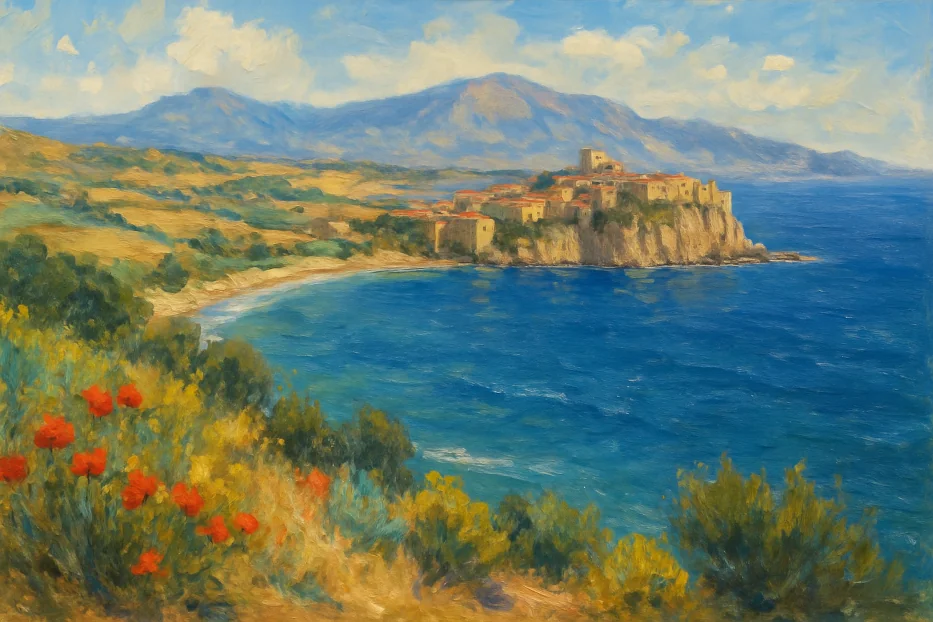Nestled at the toe of Italy’s boot, the island of Sicily is a land of paradoxes: ancient yet timeless, rugged yet refined, Italian yet wholly its own.
Questions about this island drift across the digital ether daily, revealing a global curiosity about what makes Sicily such an irresistible draw for travelers, historians, and dreamers alike. From its geography to its gastronomy, here are the answers to the 12 most commonly asked questions about Sicily, woven into a portrait of one of the world’s most fascinating destinations.
Table of Contents
Is Sicily in Italy or Is It Its Own Country?
Sicily is part of Italy—politically, administratively, and culturally—but to say it is simply “Italian” would overlook its fiercely independent identity. It is Italy’s largest region and the largest island in the Mediterranean Sea, yet Sicily has its own autonomous government, dialect, and centuries of history shaped by a confluence of Greek, Roman, Arab, Norman, and Spanish influences. It is Italian in citizenship but Sicilian at heart.
What Is the Island Most Known For?
Sicily is known for its dramatic coastline, baroque towns, Mount Etna (Europe’s tallest active volcano), and a cultural legacy as deep and multilayered as its volcanic soil. It is a land where ancient ruins like the Valley of the Temples in Agrigento sit beside vibrant street markets and golden beaches. Perhaps most evocatively, Sicily is known for its food: a culinary tapestry rich in Arabic spices, fresh seafood, and local produce.
Is the Island Expensive for Tourists?
Compared to Italy’s northern cities or tourist magnets like the Amalfi Coast and Venice, Sicily is a breath of budget-friendly fresh air. Accommodation, food, and activities are generally more affordable, though luxury options abound. You can dine on fresh pasta with sea urchin or enjoy a cannoli and espresso in a centuries-old piazza without breaking the bank.
What Is the Nicest Part of Sicily to Visit?
The answer depends on what you seek. For Greek history and stunning coastlines, head to Siracusa and its island heart, Ortigia. For cinematic beauty, Taormina dazzles with its ancient theater and sweeping views. The Aeolian Islands, scattered off the northern coast, offer unspoiled nature and volcanic landscapes. Meanwhile, Palermo delivers chaos and charisma in equal measure. Each region tells a different story.
Why Is the Island So Different From Italy?
Sicily’s difference is rooted in its history. Over centuries, it has been ruled by Greeks, Romans, Byzantines, Arabs, Normans, and Spanish, each leaving indelible marks on the island’s language, architecture, and customs. Geographically closer to Africa than to Milan, Sicily developed as a cultural crossroads, making it a land of hybrids and contrasts, more Mediterranean than strictly “Italian.”
What Is the Best Month to Be There?
May, June, September, and October are ideal. These months offer warm weather without the oppressive heat of high summer and fewer crowds. Spring is alive with wildflowers and festivals, while early autumn brings grape and olive harvests. July and August can be beautiful but hot, especially inland.
Is Sicily Budget Friendly?
Yes, particularly for independent travelers. You can eat well in local trattorias for under €20, stay in charming B&Bs or agriturismos (farm stays), and explore towns, beaches, and ruins with minimal expense. Public transport is inexpensive but limited, so budgeting for a car can add flexibility without too much strain.
Where Not to Stay on the Island?
While most of Sicily is safe and welcoming, some neighborhoods in large cities like Palermo or Catania may be less desirable for tourists due to petty crime or a lack of amenities. Also, certain inland villages, though culturally rich, may lack infrastructure for travelers. Research is key: charming small towns like Modica or Castelbuono offer safer and more enjoyable alternatives.
Is the Amalfi Coast or Sicily Better?
It’s apples and oranges. The Amalfi Coast offers postcard-perfect villages perched on cliffs, with a high-glamour atmosphere and steep prices. Sicily, by contrast, is more raw, more varied, and deeply layered in history and culture. For travelers seeking authenticity, adventure, and a sense of discovery, Sicily often feels more rewarding and more real.
How Many Days Do You Need in Sicily?
A minimum of 7 to 10 days is recommended to explore even a fraction of Sicily’s wonders. In two weeks, you can circle the island and savor its diverse landscapes and cities. Any less, and you’ll be choosing between Mount Etna or the Valley of the Temples, between Palermo’s street life and the tranquility of the Aeolian Islands.
Direct Ferries
Routes, Schedules, Prices
Ferries to Sicily
What Food Is Famous in Sicily?
Sicilian cuisine is a sensory explosion. Highlights include arancini (fried rice balls), pasta alla Norma, caponata (a sweet and sour eggplant dish), and seafood couscous in the west. Desserts shine: cassata, cannoli, and granita with brioche are local legends. Don’t miss the local wines either, from Etna reds to sweet Marsala.
Do You Need a Car on the Island?
While you can get around without a car using trains and buses, a car opens up the island in essential ways. Many of the best beaches, hilltop villages, and archaeological sites are difficult or impossible to reach without one. Just be prepared for narrow roads, chaotic city driving, and limited parking in historic centers.

